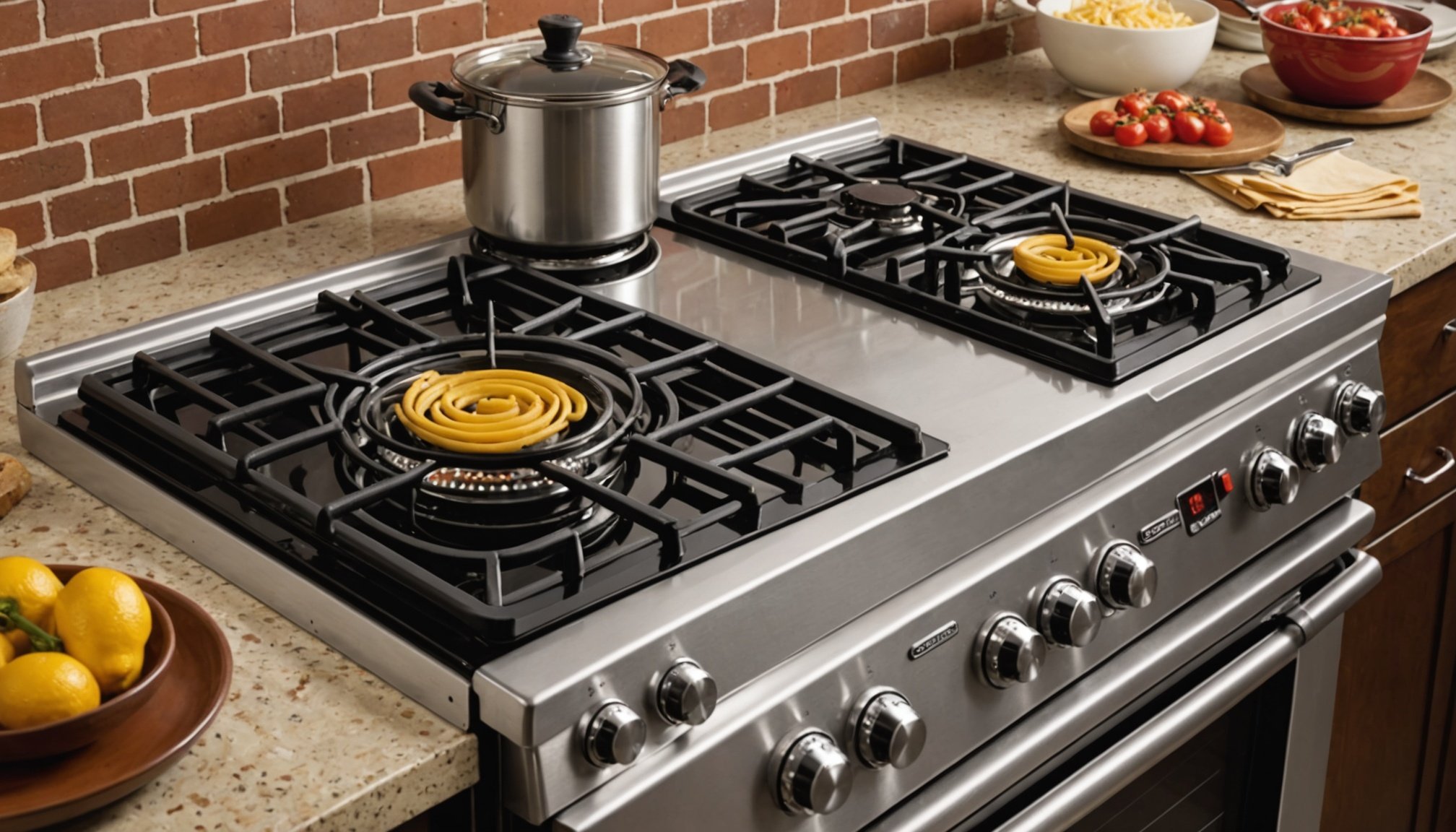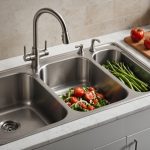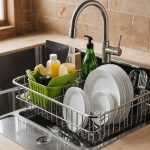As you embark on the journey to upgrade your kitchen, the quest for the most energy-efficient stove becomes a focal point. Especially considering the high energy costs and the pressing need to conserve energy, it is crucial to make an informed choice. In this context, the question that often arises is: which is more energy-efficient – a glass top stove or coil burners?
In this article, we will examine these two types of stoves, taking into account factors such as induction, heat, energy consumption, and ranges. By comparing the properties, benefits, and potential drawbacks, we will provide you with all the information you need to make the best decision for your kitchen.
Also to read : How to Select the Most Efficient Layout for a Kitchen with Multiple Cooktops?
Glass Top Stoves
The glass top stove, also known as a smooth cooktop, is a popular choice in many modern kitchens. But why is that exactly, and are they really more energy-efficient?
Induction and Energy Efficiency
Glass top stoves use a technology known as induction for heating your pots and pans. They have an electromagnet beneath the glass surface that generates heat directly into your cookware. This contrasts with coil burners, which heat the air around your pots and pans instead.
Also to see : Which Material Is Best for a Mortar and Pestle Used Daily?
The main advantage of induction is that it is highly energy-efficient. Because heat is transferred directly to your cookware, there’s less heat loss to the surroundings. Therefore, your food gets cooked faster and less energy is wasted, making induction cooktops an excellent choice for energy-conscious consumers.
Glass Top Stove Ranges
Glass top stoves often come with a wide range of heating options, allowing you to adjust the heat level to suit different cooking needs. This flexibility allows you to use exactly the amount of energy you need and no more, contributing to energy conservation.
Cleaning and Maintenance
Another advantage of glass top stoves is that they are easy to clean. Since the cooktop is smooth, there are no crevices for food particles to hide. This reduces the need for energy-zapping deep cleanings that can be necessary with coil burners.
Coil Burners
Coil burners, or electric stoves, have been around for much longer than glass cooktops, and are still found in many homes. Let’s delve into their energy efficiency and other characteristics.
How Coil Burners Work
Coil burners work by running electricity through a metal coil, which then heats up and transfers heat to the pot or pan. Although this process is efficient, it is not as direct as induction, leading to some energy loss.
Range and Heat Control
Coil burners usually come with a good range of heat settings, allowing you to control the cooking process. The coils also heat up and cool down quickly, providing more control over the cooking process.
Durability and Maintenance
Coil burners are generally more durable than glass top stoves, as they can withstand heavy pans and accidental drops. However, they are more difficult to clean due to the presence of coils and drip pans.
Comparing Energy Efficiency
As we’ve discussed, induction cooktops are generally more energy-efficient because they generate heat directly into your cookware. Electric stoves, on the other hand, heat the air around your pots and pans, leading to some energy loss.
A study by the U.S. Department of Energy found that induction cooktops were about 12% more energy-efficient than electric coil burners. This difference can add up over time, leading to significant energy and cost savings.
Cost Considerations and Long-Term Value
While glass top stoves might be more energy-efficient, they also tend to be more expensive upfront. However, the energy savings over time can offset the initial cost. Coil burners, on the other hand, are generally cheaper to purchase but may cost more in the long run due to their lower energy efficiency.
When considering which stove to buy, consider not just the upfront cost but also the long-term value. A more expensive stove that saves energy can pay for itself over time through reduced energy bills.
Choosing the Right Stove for Your Kitchen
Choosing the right stove for your kitchen is a personal decision that depends on many factors. If energy efficiency is your top priority, a glass top stove might be the best choice. However, if you’re on a tight budget, a coil burner stove might be more feasible.
Remember to consider other factors such as your cooking habits, the size of your kitchen, and your personal aesthetic preferences when making your decision. With the right information, you can choose a stove that combines energy efficiency with style and functionality.
Glass Top vs Coil Burners: A Closer Look at Induction Cooktops and Electric Ranges
As technology advances, so does the variety of options for kitchen appliances. Here, we delve deeper into the two categories previously discussed: glass top stoves (also known as induction cooktops) and coil top stoves (part of the broader category of electric ranges).
Induction Cooktops
Induction cooktops, or glass top stoves, are smooth top appliances that utilize a magnetic field to generate heat. This direct heat transfer method is what earns these cooktops their title as energy efficient. Induction cooktops only heat the pot or pan, leaving the surrounding area and the stovetop itself cool to the touch. This direct heat minimizes energy waste, making these cooktops 12% more energy-efficient than their coil top counterparts according to a U.S. Department of Energy study.
One distinct feature of induction cooktops is their smooth top surface, made of ceramic glass. This sleek, modern design has a dual benefit: it enhances the aesthetic appeal of your kitchen and simplifies clean-up. With no nooks or crannies where food particles can hide, the smooth top is easy to clean, saving both time and energy.
However, induction cooktops come with a few drawbacks. Firstly, they are usually more expensive upfront than coil top stoves. Secondly, they require specific cookware—pots and pans must be made of magnetic material, such as cast iron or stainless steel, for the heat transfer to work.
Electric Ranges
Electric ranges, housing coil top stoves, are a familiar sight in many homes. Coils heat up as electric current passes through them, warming the air around the pot or pan. This method, though not as energy-efficient as induction cooktops, still delivers a reliable cooking experience.
With electric ranges, users have a wide range of heat control, and these appliances typically feature a double oven, adding to their versatility. Unlike glass top stoves, coil top stoves can handle any type of cookware, making them a convenient choice for many households.
In terms of cost, electric ranges are generally cheaper upfront. However, their lower energy efficiency may lead to higher energy bills over time.
Conclusion: Making the Best Choice for Your Kitchen
In the debate of glass top stove vs coil burners, both sides have valid points. If you prioritize energy efficiency and aesthetics, a glass top stove, or induction cooktop, may be the best choice. This smooth top is not only easy on the eyes but it also provides a more efficient cooking experience and is easier to clean.
On the other hand, if affordability and versatility take precedence, a coil top stove within an electric range could be a more suitable choice. With a double oven and no restrictions on the type of cookware used, coil top stoves offer convenience at a lower upfront cost.
Ultimately, the decision comes down to personal preference and specific needs. Consider not just the initial costs, but also the long-term value. Energy-efficient appliances may have higher upfront costs, but the savings on energy bills can make up for the initial expense over time.
Keep in mind, the most energy-efficient stove isn’t necessarily the best if it does not suit your cooking style or kitchen design. Balance energy efficiency with other factors such as cooking habits, kitchen size, aesthetics, and budget to make an informed choice. Always remember, the aim is to find a perfect blend of efficiency, style, and functionality in your kitchen appliances. Make your kitchen a space where you enjoy cooking.











